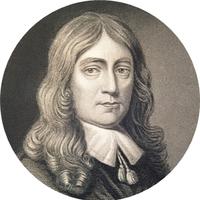02a. Introduction to Areopagitica. Introduction by Sir R. C. Jebb. Part 1/2.
Introduction to Areopagitica. Recording by Thomas Copeland.
Introduction by Sir Richard C. Jebb.
In June, 1643, came forth an Order of the Lords and Commons for the Regulating of Printing. In November, 1644, Milton's Areopagitica was published as a protest against this Order. It is a pamphlet in the form of a speech supposed to be addressed to the Parliament. Near the beginning, Milton says—“I could name him who from his private house wrote that discourse to the Parliament of Athens that perswades them to change the forme of Democraty which was then establisht.” The Areopagiticus of Isokrates (355 bc) is a speech, supposed to be made in the ekklesia, about the Areiopagos—urging the restoration of its old powers. The Areopagitica of Milton is a speech to the English Areiopagos—the Parliament of the Commonwealth.
From the introduction of printing into England, the liberty of the press had been modified from time to time by royal proclamations.
In 1557 the Stationers' Company of London was formed. The exclusive privilege of printing and publishing in the English dominions was given to 97 London stationers and their successors by regular apprenticeship. All printing was thus centralised in London under the immediate inspection of the Government. No one could legally print, without special license, who did not belong to the Stationers' Company. The Company had power to search for and to seize publications which infringed their privilege.
In the next year Elizabeth came to the throne. It was resolved to continue the restrictions on the freedom of printing; but, as the Stationers' Company, incorporated in Mary's reign, was not thought a fit body to decide, under a Protestant Queen, what should or should not be published, it was determined to put the licensing power in other hands In 1559 the 51st of the Injunctions Concerning Religion provided that no book in any language—schoolbooks and certain classics excepted—should be printed without license from one of the following persons or bodies: (i) the Queen: (ii) Six Members of the Privy Council: (iii) the Chancellor of the University of Oxford: (iv) the Chancellor of the University of Cambridge: (v) the Archbishop of Canterbury: (vi) the Archbishop of York: (vii) the Bishop of London: (viii) the Bishop, being Ordinary, and the Archdeacon, of the place of publication
In 1566 this order was ratified by a decree of the Star-Chamber.
In 1586 a new decree of the Star-Chamber provided: 1. That, in addition to the presses under the control of the London Company of Stationers, there should be one press at Oxford and another at Cambridge. (Hitherto the privilege claimed, through their Chancellors, by the Universities had sometimes been disputed by the London printers.) 2. That the power of licensing, formerly shared by eight different persons or bodies, should belong to two persons only, viz. the Archbishop of Canterbury and the Bishop of London, jointly or severally. Certain papers and books, however, were excepted from their censorship; viz. (1) official documents sent to the Queen's printer: (2) law-books, which were to be licensed by the Chief Justices and the Chief Baron. It was part of the duty of the Archbishop's and the Bishop's Chaplains to examine books intended for printing. If the book was approved, the licenser endorsed it, and the printing then began. Before the book was published, the publisher registered it, for 6d., in the books of the Stationers' Company. He then had the copyright; or, in other phrase, the book was his “copy.” The book appeared with the words cum privilegio on the title-page, or with a copy of the licenser's certificate. This is a translation of the Latin certificate prefixed to a book by Lord Herbert of Cherbury, printed in England in 1632: “I have read through the Treatise entitled ‘On Truth, as distinguished from Revelation, from the Probable, the Possible and the False.' The book contains 227 pages already printed, and about 17 in ms. ; in which I find nothing contrary to morals or to the truth of the Faith, to hinder it from being printed to the public advantage. William Haywood, Domestic Chaplain to the Bishop of London, Dec. 31, 1632.” [The book must have been licensed before one of the 227 pages could have been printed; though this formal certificate was not written until the printing was nearly completed.]
During the reign of James I and the earlier part of the reign of Charles I, the Archbishop of Canterbury and the Bishop of London continued to be the sole licensers. From about 1627 to 1632 Laud, then Bishop of London, appears to have done almost all the work of the censorship, leaving little of it to Archbishop Abbot. About 1632 a division of the work seems to have been admitted. At that time books to be printed at the University presses were licensed by the Vice-Chancellors of Oxford and Cambridge; in certain cases, licenses were granted by the Judges or the Secretary of State; plays and poems could be licensed by Sir Henry Herbert, the Master of the Revels. It appears, however, that by 1637 either the licensing regulations had come to be less strictly enforced, or means had been found to evade them by the establishment of private presses.

